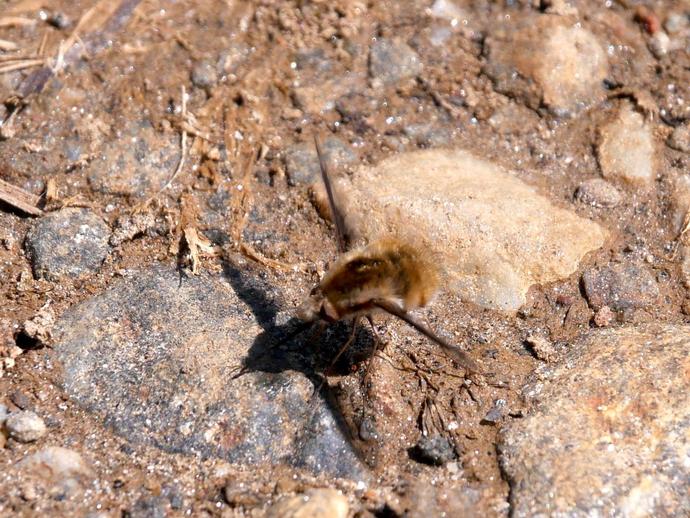November 28, 2020
We're reaching into the archives for today's #BenInNature update! The following post was originally published on April 19, 2020.
With its cute fuzzy abdomen, you could easily mistake this fellow for a friendly bumblebee; however, it's all a clever ruse! This is Bombylius major, also known as the large bee fly, and as the name suggests, it's actually a fly in disguise. An easy way to tell that they're flies instead of bees is that they only have one pair of wings as opposed to two. Bee flies don't bite, sting, or spread disease, and they're important generalist pollinators. In addition to being found in North America, this species can also be found in Europe and parts of Asia.
Bee flies have likely evolved to resemble bumblebees for a couple of reasons. First off, their appearance likely deters predators that would enjoy eating a fly but wouldn't mess with a bumblebee. Their mimicry also allows them to get close to the nests of their hosts.
When it comes time to lay its eggs, a bee fly will find the nest of one of several species of solitary wasps and bees; they're particularly fond of solitary digging bees. The female bee fly will hover over the opening to the subterranean nest and then flick her eggs into the tunnel. Only a few eggs will actually make it into the tunnel. When an egg hatches, the bee fly larva will begin eating the larva of the solitary bee or wasp, and it will also eat the food that was stored in the nest. Eventually, the bee fly larva will turn into a pupa to overwinter and then emerge in the spring.
Don't judge the bee fly too harshly, however; it pollinates a wide variety of plants and serves an important function.
ABOUT #BenInNature
Social distancing can be difficult, but it presents a great opportunity to become reacquainted with nature. In this series of posts, Administrator of Science Ben Williams ventures outdoors to record a snapshot of the unique sights that can be found in the natural world. New updates are posted Monday - Friday, with previous posts highlighted on the weekends.
NEW: TRIVIA CHALLENGE
You've seen the posts. You've learned the facts. Now, it's time to prove you are a #BenInNature Mega Fan! The museum's education team has developed the #BenInNature Trivia Challenge to identify the most devoted fans out there! Everyone who successfully answers each trivia question correctly will be congratulated by having your own nature selfie posted to the museum's #BenInNature Mega Fan Photo Album on the official VMNH Facebook page! Learn more and download the trivia challenge today by visiting www.vmnh.net/research-collections/beninnature-trivia-challenge.
NATURE PHOTO IDENTIFICATIONSIf you discover something in nature that you would like help identifying, be sure to message us right here on Facebook with a picture (please include location and date of picture) and we'll have our experts help you identify it!

 Hours & Admissions
Hours & Admissions Directions
Directions

